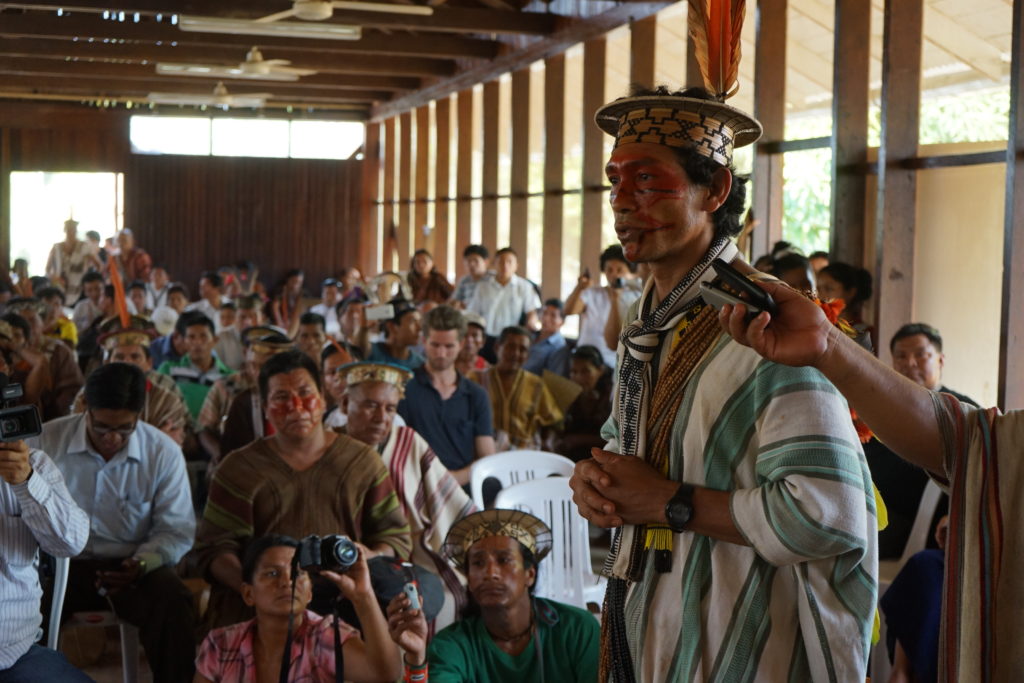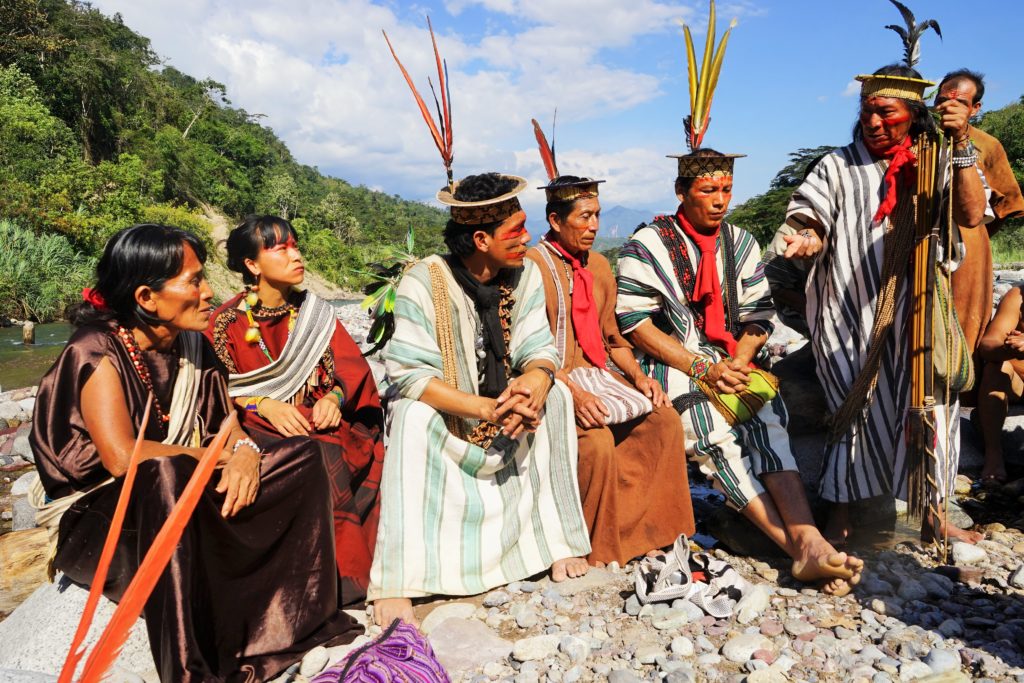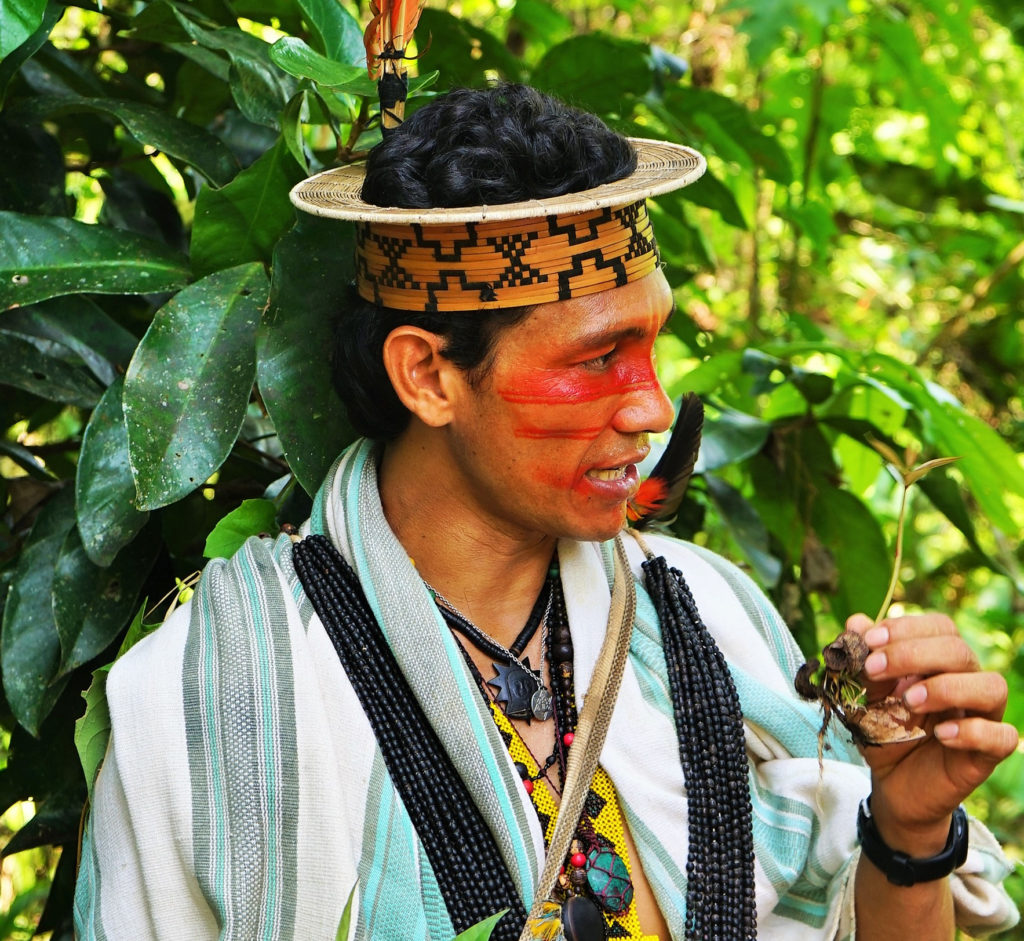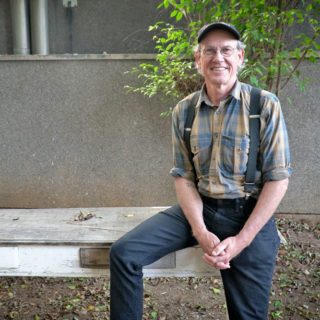“I’m the type of person who searches, brings, places, and searches some more.” Such a simple definition does not do justice to the story of this indigenous leader, agroforestry agent and environmental activist, responsible for a reforestation project that has planted over 1 million trees and trained thousands of young people to do this work. Benki Piyãko, 43, has dedicated his life to defending the land and culture of his people, the Ashaninka, and to preserving the rich Amazonian ecosystem. “When we created the Yorenka Ãtame – Forest Knowledge Center project in 2007, we started with 80 youngsters,” recalls Piyãko. “Today, there are over 10 thousand people connected to this initiative, joining indigenous people, rubber tappers, and all of the river dwellers in reforesting and managing the land.”
The Ashaninka are one of the largest indigenous groups in South America. They live on the border between Peru, where most of them are located, and Brazil. The creation of the Yorenka Ãtame center, located in the municipality of Marechal Thaumaturgo, in the state of Acre, was essential to establishing dialogue between the Ashaninka in both countries, and also to exchanging knowledge with other indigenous peoples.
“I believe in this exchange of knowledge with other peoples. At the center, I understood the difficulties they face because of the massacre they suffered under the hands of white civilization”, says Piyãko, who tries to find ways that good can come out of these problems.
“Over the years, I have recovered the knowledge of many communities. Some had only three people that still spoke their original language, and they didn’t want to speak it anymore. I brought this culture back and strengthened that people’s spirituality.”

Piyãko addresses leaders during a congress of Ashaninka people from Brazil and Peru in 2015, in Pucallpa, Peru (Carolina Comandulli)
THE LEADER THAT TRAINS LEADERS
Piyãko has played a leadership role for the Ashaninka since the age of 10, having fought for the protection of their land and against loggers and invaders. When he was 18, he left his village for the first time to take part in Eco 92, as a representative for various indigenous peoples. In addition to denouncing the destruction of the forest, he defended the indigenous people’s right to land and criticized the system designed by Funai, the Brazilian government agency responsible for policy on indigenous people, arguing that it would create a relationship of dependency between indigenous peoples and the government.
The many initiatives started by Piyãko, such as the Rio Amônia Ashaninka Association (Apiwtxa) and the Ayõpare Cooperative, are guided by his commitments to his people’s autonomy and to the restoration and strengthening of their culture. The Apiwtxa association operates as the Ashaninka’s political and social arm, developing strategies to recover degraded areas and protect biodiversity. Meanwhile, the Cooperative guarantees the tribe’s self-sufficiency through hunting, fishing, and growing food, and its financial independence by producing arts and crafts and, soon, fruit pulp and honey.
Piyãko’s biggest challenge, however, was training the agroforestry agents that educate the indigenous people on environmentally sustainable development. They offer strategies that can be adapted to the environmental and cultural needs of each community, and also represent the interests of their people in negotiations with the government and private companies. Piyãko had to overcome a lot of prejudice in this initiative, because people didn’t accept that an indigenous man could work with businesses. “Today, we have an agroindustry, a municipality led by an indigenous man [Benki’s brother, Isaac Piyãko, current mayor of Marechal Thaumaturgo], a supermarket that exchanges trash for food,” he says.

Piyãko with Ashaninka leaders in a sacred site, in Peru (Carolina Comandulli)
A CONNECTION TO THE SOUL
Benki Piyãko is also the Ashaninka’s spiritual leader. When he was 2 years old, he started to learn his tribe’s traditions, and about the forest’s healing powers, from his grandfather. Since then, he has undergone a series of xamanic experiences, in which he says to have seen all the projects he would later create. “I am highly connected to my spiritual world. It is what tells me ‘yes’ or ‘no,’ if something is good or bad,” he explains. Piyãko claims to have had visions for over 20 years of his latest initiative, a medical center that will join the traditional sciences with the spiritual and medicinal knowledge of the forest.
“I have created many enterprises, and today I don’t manage any of them,” Piyãko says. “I want to dedicate all of my time to this center, which will work as a mini-hospital.” According to him, the project, which will be supervised by doctors and representatives of the Department of Health, has already been approved and is currently in development.
Benki Piyãko is an Ashoka fellow. Ashoka is a worldwide organization present in 84 countries and leads a movement in which any individual can be responsible for positive social transformation. This content is supported by Instituto Socioambiental (ISA) and Greenpeace.
Published on 09/13/2017





